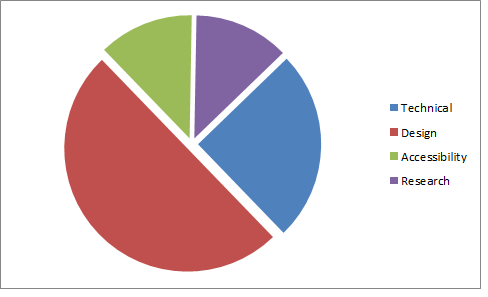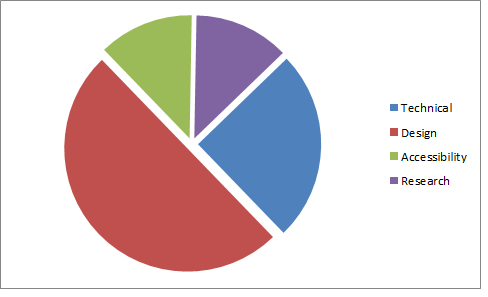On this post:
Day 1 sessions synopsis
The UX Cambridge conference is at our doorstep again.
This year we’re presented with a 3-day conference, offering a mix of pragmatic workshops and talks.
To kick-start the conference, we’ll have a keynote by Eric Reiss, author of numerous books on the subject of usability, including Usable Usability, which is the theme of the day long workshop on Tuesday 9 September.
Following that, we have Alberta Soranzo delivering a tutorial during the first batch of sessions.
I have met Alberta at the Service Design in Government conference, where she talked about using geographical data to inform decisions in adult social care.
I have a weak spot for data analysis and its use in decision-making, so I found this to be of particular interest.
Alberta’s session at UX Cambridge follows a slightly different direction, but one that’s extremely relevant to our future experiences with technology. The session is called Experience at the edge of the network and will cover the topic of ubiquitous computing. I am particularly interested in the data protection and privacy issues surrounding ubiquitous mobile computing.
If you’re into science Sangya Pundir from EMBL-EBI, will be talking about UX for science at the same time.
The “Seamless” is a shallow metric for UX success tutorial, by Simon Bostock, follows on the same subject as Alberta Soranzo’s morning session, but focusing on what comes next. Beyond making things seamless, how can we expose the Interaction of Things?
Lindsay Keith will be talking about agile UX processes in her talk Transforming Enterprise Software Products while keeping the lights on…, with a focus on reducing time and the risks of too many front-end code iterations.
One session I’m really looking forward to attend is Designing with people with little or no sight by Nikiforos Karamanis.
Over the last couple of years I’ve seen a growing interest in web accessibility, but building accessible interfaces is still often low on the burn down list of things to achieve.
Accessibility is a very wide concept. In this session Nikiforos will focus on the needs of visually impaired users.
After lunch the day becomes more pragmatic, with several workshops available.
Paul-Jervis Heath will deliver Imagine, Invent and Articulate: a framework for disruptive innovation.
Paul is experienced in applying creative methods to human-centred design. His session promises to challenge the status quo of whatever industry sector(s) is covered, and trigger creative thinking.
Last year the Making more senses of UX workshop was very successful, so Alastair Somerville is back this year for more. The session focuses on the sensorial dimensions of UX.
The folk from Dovetailed (Vaiva, Gerard and Anusha) also promise a very sensorially rich session. Getting Physical with Design will arm its attendees with sensors and electronic gadgets, and release them into Cambridge to spot physical design challenges.
Please note: no details for the session The Sound of UX were available at the time this post was written.
General day 1 sessions feel

Day 1 speakers Twitter handles for #uxcam
- Mark Dalgarno – @MarkDalgarno
- Eric Reiss – @elreiss
- Alberta Soranzo – @albertatrebla
- Sangya Pundir – @SangyaPundir
- Leo Poll – @L_Poll
- Simon Bostock – @i4_1
- Lindsay Keith – @lwjkeith
- Nikiforos Karamanis – @technorasis
- Paul Jervis-Heath – @pauljervisheath
- Alastair Somerville – @Acuity_Design
- Vaiva Kalnikaite – @vaivutek
- Gerard Oleksik – @GerardOleksik
- Anusha Iyer – @anushaiyer

Leave a comment